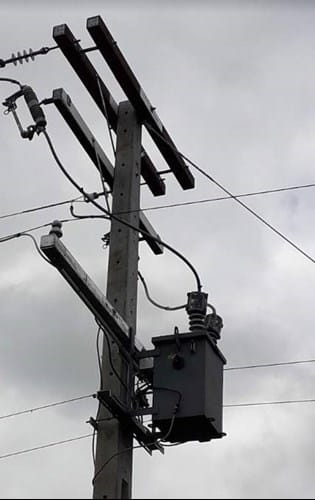Falcon-friendly transformers
Powerco is incorporating new features into its network to help protect native wildlife.
To keep kārearea safe from electrocution, Powerco has designed falcon-friendly sleeves for some of its network assets.

The kārearea (New Zealand falcon) is New Zealand’s most threatened bird of prey, with the ‘bush’ falcon being the most common species in areas of Powerco’s network.
Nationally, nearly half of all falcon deaths are caused by electrocution, particularly around transformers and high voltage cable terminations. They use transformers as a platform to scan for prey, but unfortunately when they spread their wings between the power lines they get electrocuted.
Rebecca Dearden, Powerco’s Environment and Sustainability Manager, says talks with the Department of Conservation and the Wingspan Bird of Prey Centre in Rotorua helped the company figure out which electricity structures were contributing to the problem.
In response, Powerco identified which areas of the network could incorporate features to make them 'kārearea safe'. By cross-referencing the locations of its transformers with falcon populations, it found 1106 transformers within 500 metres of falcon observations (just 3.17% of Powerco’s total 34,890 transformers).
Powerco’s network in Maungatautari (pictured) was one of the first to have the new falcon-friendly designs two months ago. This consists of clip-on guards that cover the exposed part of the bushings, while the bare copper leads are protected with a split sleeve cover that is normally used to protect lines around trees.
Powerco has also shared this information on its GIS Portal for its designers and maintenance contractors to identify transformers near falcon sightings.
“The aim is to empower designers to make confident and informed decisions on using falcon-friendly protection on our high voltage assets throughout the designing phase,” says Rebecca Dearden.
“In this way, we hope to do our part to keep kārearea safe and help them thrive in our communities.”

